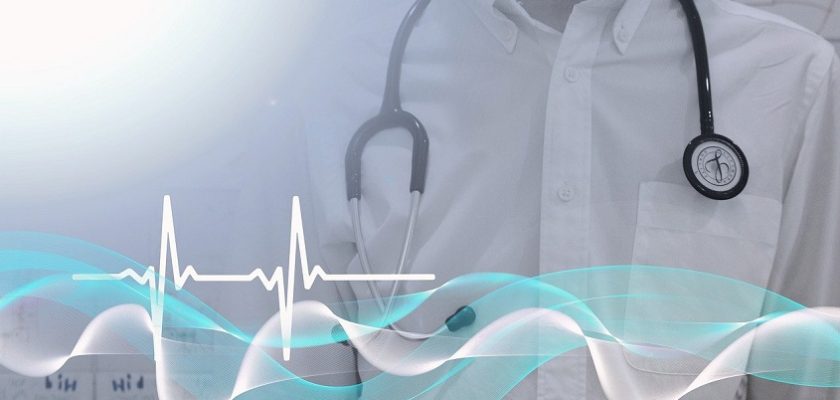The Impact of the IoT on the Healthcare Industry
- Posted on January 31, 2023
- By Vishakha Yadav
- Read 4 minutes
Table of Content

IoT (Internet of Things) refers to the interconnected network of physical objects (devices, vehicles, buildings, etc.) that are equipped with sensors, software, and connectivity, which enables them to collect and exchange data, and to perform tasks autonomously. It allows objects to be sensed and controlled remotely across existing network infrastructure.
IoT is revolutionizing healthcare by enabling remote patient monitoring, automating clinical workflows, improving communication and collaboration among healthcare professionals, and providing data-driven insights for better patient outcomes. It can also help in reducing the cost and increasing the efficiency of the healthcare system.
The benefits of IoT in healthcare
- Increased efficiency and cost savings through automation of clinical workflows and remote monitoring of patients
- Improved patient outcomes through real-time monitoring of vital signs, early detection of potential health issues, and personalized medicine
- Enhanced communication and collaboration among healthcare professionals through connected devices and systems
- More accurate and timely data collection for research and analysis, leading to better decision making
- Improved patient experience through greater convenience and accessibility
- Increased patient engagement and empowerment through access to personal health data and the ability to actively manage their own health.
Examples of IoT in healthcare
- Remote Patient Monitoring: IoT-enabled devices such as wearable fitness trackers, smart watches, and home monitoring systems can collect and transmit vital signs data, such as heart rate, blood pressure, and temperature, to healthcare providers in real-time. This allows for remote monitoring of patients with chronic conditions and early detection of potential health issues.
- Wearable Devices: Wearable devices like smartwatches and fitness trackers can monitor vital signs like heart rate, sleep patterns, and physical activity, providing healthcare providers with valuable insights into a patient’s health.
- Smart Pills: IoT-enabled smart pills are embedded with sensors that can track when a patient has taken their medication and transmit that information to healthcare providers.
- Telemedicine: IoT-enabled telemedicine allows patients to consult with healthcare providers remotely using video conferencing, making healthcare more accessible and convenient.
- Smart Medical Devices: IoT-enabled medical devices such as smart insulin pumps, blood glucose monitors, and inhalers can automatically adjust dosages and transmit data to healthcare providers, enabling more precise and personalized treatment.
- Smart Hospitals: IoT-enabled smart hospitals can use sensors and automation to improve patient flow, reduce medical errors, and optimize resource allocation.
Challenges and considerations
- Data Privacy and Security: One of the major challenges with IoT in healthcare is protecting sensitive patient data from cyber-attacks and breaches. Ensuring the security of connected devices and systems is essential to maintaining patient trust and compliance.
- Interoperability of Devices and Systems: Connected devices and systems must be able to communicate and work together seamlessly in order to be effective. Ensuring interoperability between different devices and systems can be a challenge, and requires standardization and collaboration among healthcare providers, technology companies, and regulatory bodies.
- Implementation and Adoption Barriers: Adopting IoT technologies in healthcare can be expensive, and requires significant investment in infrastructure, training, and support. Healthcare providers may also be hesitant to adopt new technologies due to concerns about cost, disruption to existing systems and processes, and potential regulatory compliance issues.
- Limited Cybersecurity Expertise: Many healthcare organizations have limited cybersecurity expertise and resources. This can make it difficult for them to identify and mitigate potential security risks associated with IoT devices and systems.
- Lack of standardization: With the rapid growth of IoT in healthcare, there is a lack of standardization in terms of devices, platforms, and protocols. This can make it hard for healthcare professionals to integrate and use the devices in a seamless way.
Future trends and predictions
- Advancements in AI and Machine Learning: IoT devices and systems will increasingly incorporate artificial intelligence and machine learning capabilities to improve decision-making and automate tasks. This will enable more accurate and personalized patient care, as well as more efficient and cost-effective healthcare delivery.
- Growth of 5G Networks: The deployment of 5G networks will enable faster and more reliable connectivity for IoT devices and systems, making it possible to transmit larger amounts of data and support more sophisticated applications.
- Expansion of IoT in Developing Countries: As IoT technologies become more affordable and accessible, they will be increasingly adopted in developing countries, where they have the potential to revolutionize healthcare delivery in areas with limited resources and infrastructure.
- More focus on Patient-generated data: IoT devices that are worn or used by patients, such as wearables, will generate large amounts of data that can be used to improve personalized medicine and patient-centric care.
- Greater adoption of IoT in ambulatory care: The adoption of IoT in healthcare will increase in ambulatory care settings, such as clinics, urgent care centers and doctor’s offices, as more patients receive care outside of the hospital setting.
- Development of IoT Ecosystems: IoT ecosystems, which include IoT devices, platforms, services and applications, will continue to evolve and become more sophisticated, enabling new use cases and business models for healthcare providers.
